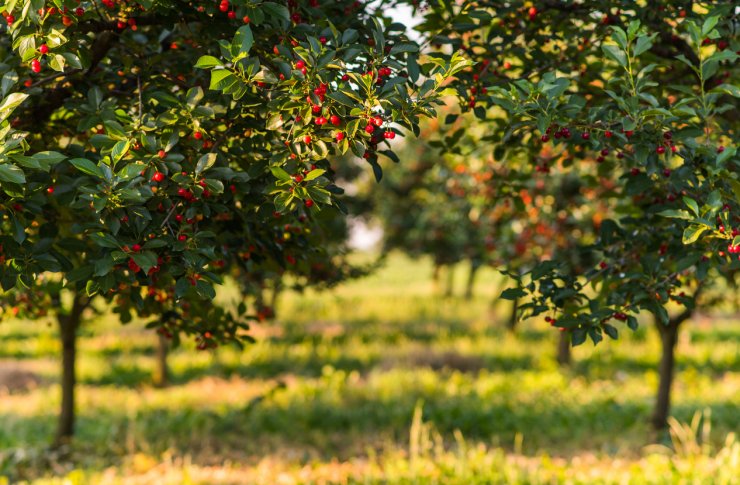
Cherry trees
There are two types of cherries: sweet cherries (Prunus avium) and tart or sour cherries (Prunus cerasus). They cannot be used to pollinate each other, and no two of the same sweet or sour variety can pollinate each other, so if you’re interested in a self-sterile variety, you’ll have to pick a second variety of the same type for pollination.
Sweet cherries are the type most commonly found in markets. They have a thick, rich, almost plumb-like texture. They grow in zones 5 to 7 and are self-sterile, making them best for a large orchard or garden where you have room for two or more trees. Luckily, there are dwarf sweet varieties available, too.
Sweet cherries are perfect for fresh eating right off the tree, and you can also bake them or preserve them in jams and jellies.
Sour cherries grow in zones 4 to 6 and are more cold-hardy. Some of these are also self-sterile, but others are self-pollinating. These are best for baking, preserves and other cooking uses, and are not typically eaten fresh, though there are folks who love the fresh tart taste of this type of cherry!
There is no difference in tree care between sweet and sour cherries.
Have you tried growing sweet or sour cherries? Which do you prefer? Please share your opinion in the comment section below.


 Previous
Previous


Lead up to this article said sweet cherries grow best zones 5-9. Actual article says zones 5-7. Which is it?